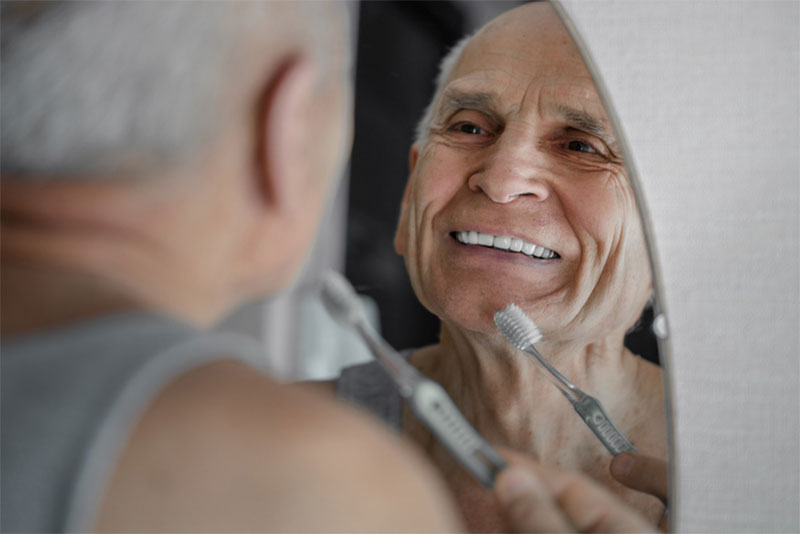
Maintaining independence for seniors with dementia is easier when adapting activities.
If you’re caring for a loved one with dementia, you may be inclined to do as much as you can for the person to help ease the stress of even the most basic everyday tasks. Independent living and dementia may even seem like polar opposites. However, each of us has an inherent need to preserve self-reliance and the freedom to stay in control of our lives. This is true in spite of dementia. Because of this, maintaining independence for seniors with dementia, to whatever degree possible, is crucial.
How Can I Promote Independence for Someone With Dementia?
It requires some extra time and energy to modify daily activities to promote independence, yet it will be worth it. And naturally, the stage of dementia will be a prominent factor in just how much adaptability is required. Here are several suggestions to get you started on rethinking how to help with maintaining independence for seniors with dementia.
Preparation and Set-Up
Contemplate the steps involved in a specific activity, and which may be challenging for the older adult. For example, reaching up into the cabinet for their toothbrush, twisting the cap off the toothpaste, and accurately squeezing just the right amount onto the bristles could be challenging. In this situation, before the person comes into the bathroom, take care of those steps, leaving the prepared toothbrush on the edge of the sink. They may then be able to independently complete the task. In the same way, you can lay out clothing, place food out for making lunch, or whatever advance steps will allow them to take care of the activity by themselves.
Stand Back But Model and Prompt When Necessary
Allow the person some space to attempt the task, but stay nearby to give assistance as required. This will allow as much independence as possible without causing the individual frustration in the event that the task turns out to be too complicated. Using the example of brushing their teeth, say the individual picks up the toothbrush but seems uncertain of what to do next. There are various ways you can offer support. One particularly unobtrusive way is through nonverbal modeling. You could pick up your own toothbrush, and while you’re both facing the mirror, start to brush your own teeth. This may be all that’s needed for the senior to copy your actions. If this does not work, try a question prompt, such as, “I see you’re holding your toothbrush; what’s next?”
Use Detailed Instructions
If prompting and modeling are not helping, try breaking the process down into smaller steps and offering verbal cues for each step as required. In the example above, it might look something like this: “Let’s place the toothbrush on our teeth. Now we’ll move the brush back and forth, like this. Now we’ll take a sip of water and rinse.” After each step, pause and see if the person can carry on alone, and if so, stop your verbal guidance and step back once again to let them finish the task independently.
Monitor
Regardless of the person’s ability level, you’ll want to stay close enough to guarantee safety. This doesn’t mean hovering over the person while they are brushing their teeth. But it does mean being near enough to make sure they are turning on cold water rather than hot to prevent a burn. There is a fine line to walk between helping and hindering.
At Grace Home Care, an expert in Topeka dementia care, it’s always our primary goal to empower seniors to maintain as much control over their daily lives and choices as possible, while ensuring their safety and wellbeing. Contact us at 785-286-2273 if you’d like to talk to us about any challenges you are facing in caring for a loved one with dementia. We are always here to help.
